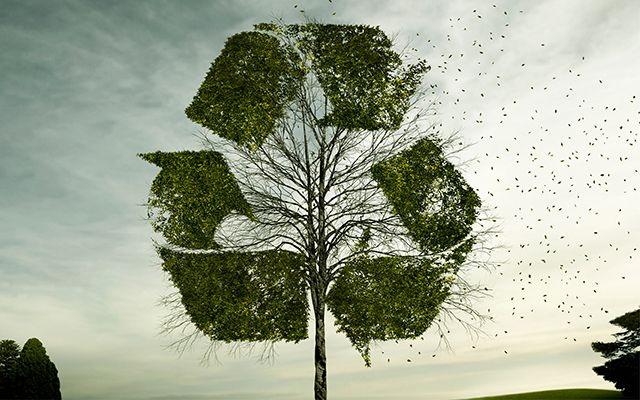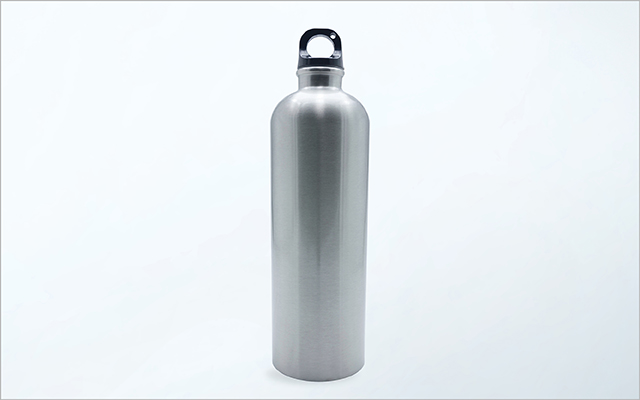We recycle old newspapers and empty cans and bottles — so why not our carbon dioxide?
Scientists have long viewed carbon dioxide (CO2) as a primary cause of climate change. A byproduct of burning fossil fuels to power our cars, heat our homes, and produce our food, CO2 holds in heat like a blanket, warming our planet. Plants and oceans absorb some of it, but we’re generating so much that it’s overwhelming the natural carbon cycle.
In 1989, MIT researchers began developing a process to collect CO2 emissions from power plants and factory smokestacks, and then inject them into subterranean rock formations where they could be stashed. Carbon capture and sequestration has proven problematic and expensive, yet attempts continue.
With new technology, the focus is now shifting to recycling captured CO2. Scientists hope to someday extract the carbon and recombine it with hydrogen from water to make hydrocarbons, such as gasoline, that we can reuse.
Other concepts include employing the carbon to form renewable methanol or converting CO2 into a biofuel — essentially pulling fuel out of thin air.
Ironically, these processes require a lot of energy, which ideally would come from renewable sources.
At the same time, innovative ecologists are looking to enhance the natural carbon cycle through “carbon farming.” Replanting trees and restoring wetlands are simple and obvious options, as both hold and recycle carbon.
No-till agriculture, careful animal grazing, and use of compost instead of fertilizers could also support the earth in capturing carbon and reducing the amount of methane and other potent greenhouse gases that are being released into the atmosphere.
Reduce Your Carbon Footprint
Consider these strategies for producing less carbon in your own daily life.
1. Minimize Driving
Our carbon footprint’s largest portion — 28 percent — comes from transportation, which includes air travel. Look for opportunities to walk, bicycle, carpool, or use public transportation. When you have to drive, choose a fuel-efficient vehicle. Remember that many electric or hybrid cars still generate carbon emissions because they’re powered by electricity produced primarily by burning fossil fuels.
2. Reduce Energy Use
Heating and cooling account for 17 percent of our carbon footprint, so insulate and seal your home, and clean and tune-up your furnace. Appliances and lights produce another 15 percent, so select energy-efficient appliances and replace incandescent bulbs with compact fluorescent or LED versions.
3. Eat Smart
Food production creates up to 14 percent of our carbon emissions, so buy food that’s local (to save on transportation), organic (pesticides, herbicides, and nonorganic fertilizers emit more greenhouse gases), and plant-based (raising meat requires more fossil fuel than growing produce and grains).
4. Buy Less Stuff
The things we buy add up to 26 percent of our carbon footprint, thanks to production, packaging, and transportation to stores or direct to your home via online shopping.
To assess your personal carbon footprint, visit www.carbonfootprint.com/calculator.aspx.
This originally appeared as “Carbon Recycling 101” in the October 2018 print issue of Experience Life.




This Post Has 0 Comments